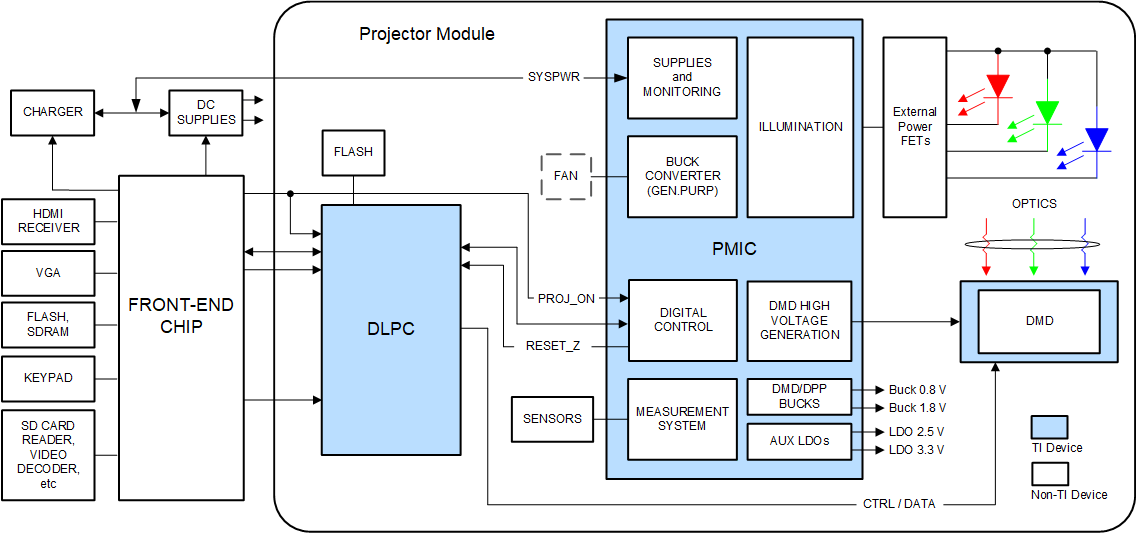DLPS240A June 2024 – August 2024 DLPA3085
PRODUCTION DATA
- 1
- 1 Features
- 2 Applications
- 3 Description
- 4 Pin Configuration and Functions
- 5 Specifications
-
6 Detailed Description
- 6.1 Overview
- 6.2 Functional Block Description
- 6.3
Feature Description
- 6.3.1 Supply and Monitoring
- 6.3.2 Illumination
- 6.3.3 External Power FET Selection
- 6.3.4 DMD Supplies
- 6.3.5 Buck Converters
- 6.3.6 Auxiliary LDOs
- 6.3.7 Measurement System
- 6.4 Device Functional Modes
- 6.5 Programming
- 6.6 Register Maps
- 7 Application and Implementation
- 8 Power Supply Recommendations
- 9 Layout
- 10Device and Documentation Support
- 11Revision History
- 12Mechanical, Packaging, and Orderable Information
Package Options
Mechanical Data (Package|Pins)
- PFD|100
Thermal pad, mechanical data (Package|Pins)
- PFD|100
Orderable Information
7.2 Typical Application
A common application when using DLPA3085 is to use it with a 0.47 4K DMD (DLP472TP) and DLPC84xx controller for creating a small, ultra-portable projector. The DLPC84xx in the projector typically receive images from a PC or video player using HDMI or VGA analog as shown in Figure 7-1. Card readers and Wi-Fi can also be used to receive images if the appropriate peripheral chips are added. The DLPA3085 provides power supply sequencing and control of the RGB LED currents as required by the application.
 Figure 7-1 Typical Setup Using DLPA3085
Figure 7-1 Typical Setup Using DLPA3085